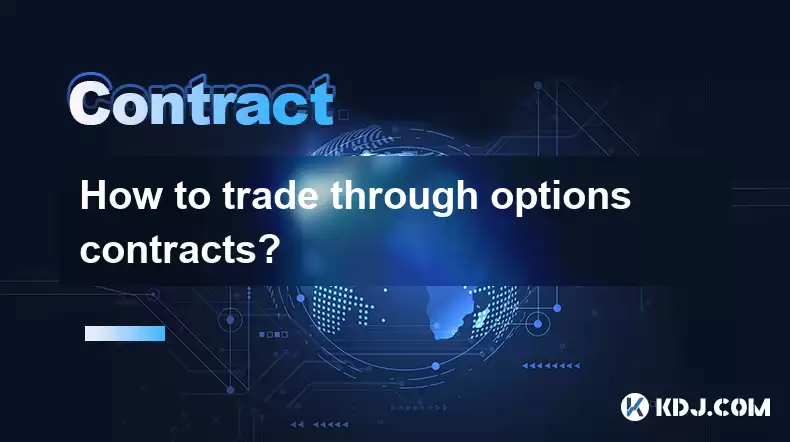-
 Bitcoin
Bitcoin $119000
2.02% -
 Ethereum
Ethereum $4233
-0.58% -
 XRP
XRP $3.182
-1.09% -
 Tether USDt
Tether USDt $1.000
-0.01% -
 BNB
BNB $804.0
0.52% -
 Solana
Solana $183.2
1.27% -
 USDC
USDC $0.9998
0.00% -
 Dogecoin
Dogecoin $0.2335
-2.82% -
 TRON
TRON $0.3384
0.95% -
 Cardano
Cardano $0.8003
-0.61% -
 Hyperliquid
Hyperliquid $45.12
1.98% -
 Chainlink
Chainlink $22.14
3.65% -
 Stellar
Stellar $0.4440
-0.46% -
 Sui
Sui $3.858
-1.36% -
 Bitcoin Cash
Bitcoin Cash $569.6
-0.25% -
 Hedera
Hedera $0.2578
-2.58% -
 Ethena USDe
Ethena USDe $1.001
-0.03% -
 Avalanche
Avalanche $23.76
-3.06% -
 Litecoin
Litecoin $123.7
2.27% -
 Toncoin
Toncoin $3.337
-1.91% -
 UNUS SED LEO
UNUS SED LEO $9.051
0.54% -
 Shiba Inu
Shiba Inu $0.00001355
-1.80% -
 Uniswap
Uniswap $10.90
-0.84% -
 Polkadot
Polkadot $4.047
-1.93% -
 Dai
Dai $1.000
0.00% -
 Cronos
Cronos $0.1628
3.51% -
 Ethena
Ethena $0.7833
5.35% -
 Bitget Token
Bitget Token $4.447
-1.73% -
 Pepe
Pepe $0.00001201
-3.46% -
 Monero
Monero $268.2
-3.37%
How to trade through options contracts?
Options trading enables traders to capitalize on market fluctuations through a variety of contracts, including call options that grant the right to buy and put options that confer the right to sell.
Feb 23, 2025 at 02:43 am

Key Points of Options Contract Trading
- Types of Options Contracts
- Understanding Options Terminology and Features
- Evaluating Option Pricing and Risk
- Trading Strategies using Options Contracts
- Tips for Successful Options Trading
How to Trade through Options Contracts
1. Understand the Types of Options Contracts
- Call Options: Give the holder the right to buy an underlying asset at a specified price (strike price) before the contract expires.
- Put Options: Give the holder the right to sell an underlying asset at a specified strike price before the contract expires.
2. Comprehend Options Terminology and Features
- Strike Price: The predetermined price at which the underlying asset can be bought (call) or sold (put).
- Expiration Date: The date after which the right to buy or sell expires.
- Premium: The price paid to purchase an options contract.
- Option Premium: The current market price of an options contract.
- Option Intrinsic Value: The difference between the strike price of the option and the current market price of the underlying asset.
- Option Time Value: The amount of the option premium that reflects the remaining time until expiration.
3. Evaluate Option Pricing and Risk
- Black-Scholes Model: A mathematical model used to determine the theoretical value of options contracts.
- Implied Volatility: A measure of the expected future volatility of the underlying asset, which affects option prices.
- Risk-Reward Profile: Consider the potential profits and losses associated with options trading before entering any positions.
4. Use Trading Strategies using Options Contracts
- Covered Call Strategy: Sell a call option against an underlying asset you own.
- Protective Put Strategy: Purchase a put option to hedge against potential losses in an underlying asset you own.
- Bull Call Spread: Purchase a call option at a lower strike price and sell a call option at a higher strike price.
- Bear Put Spread: Purchase a put option at a higher strike price and sell a put option at a lower strike price.
5. Follow Tips for Successful Options Trading
- Educate yourself thoroughly on options trading.
- Manage your risk by limiting your position sizes and using stop-loss orders.
- Choose the right options strategies for your market views and risk tolerance.
- Monitor your positions regularly and adjust as necessary.
FAQs
Q: What are the benefits of options trading?
A: Potential for high returns, income generation, hedging risk, and market speculation.
Q: What are the risks of options trading?
A: Losses can exceed the initial investment, limited time to profit, and price fluctuations.
Q: How do I determine the value of an options contract?
A: Use the Black-Scholes model or examine the option premium and intrinsic value.
Q: How do I choose the right option strategy?
A: Consider your market outlook, risk tolerance, and time frame.
Q: What are some common mistakes in options trading?
A: Trading without a plan, overleveraging, and ignoring risk management.
Disclaimer:info@kdj.com
The information provided is not trading advice. kdj.com does not assume any responsibility for any investments made based on the information provided in this article. Cryptocurrencies are highly volatile and it is highly recommended that you invest with caution after thorough research!
If you believe that the content used on this website infringes your copyright, please contact us immediately (info@kdj.com) and we will delete it promptly.
- KiwiSavers, Crypto Returns, and Digital Investment: Are Kiwis Missing Out?
- 2025-08-11 06:30:11
- Ruvi AI's Sales Surge: Could It Outpace Tron in the Crypto Race?
- 2025-08-11 06:30:11
- Meme Coin Mania: Is Shiba Inu Out and Little Pepe In?
- 2025-08-11 06:50:12
- Bitcoin Casino Weekly Challenge: Hitting the Jackpot in Crypto Gaming
- 2025-08-11 06:50:12
- Cardano (ADA): Riding the Bull Cycle Wave to New Heights?
- 2025-08-11 07:10:12
- Bitcoin Institutional Holdings in 2025: A Bullish Outlook
- 2025-08-11 07:15:19
Related knowledge

Is it possible to adjust the leverage on an open position on KuCoin?
Aug 09,2025 at 08:21pm
Understanding Leverage in KuCoin Futures TradingLeverage in KuCoin Futures allows traders to amplify their exposure to price movements by borrowing fu...

What cryptocurrencies are supported as collateral on KuCoin Futures?
Aug 11,2025 at 04:21am
Overview of KuCoin Futures and Collateral MechanismKuCoin Futures is a derivatives trading platform that allows users to trade perpetual and delivery ...

What is the difference between realized and unrealized PNL on KuCoin?
Aug 09,2025 at 01:49am
Understanding Realized and Unrealized PNL on KuCoinWhen trading on KuCoin, especially in futures and perpetual contracts, understanding the distinctio...

How does KuCoin Futures compare against Binance Futures in terms of features?
Aug 09,2025 at 03:22am
Trading Interface and User ExperienceThe trading interface is a critical component when comparing KuCoin Futures and Binance Futures, as it directly i...

How do funding fees on KuCoin Futures affect my overall profit?
Aug 09,2025 at 08:22am
Understanding Funding Fees on KuCoin FuturesFunding fees on KuCoin Futures are periodic payments exchanged between long and short position holders to ...

What is the distinction between mark price and last price on KuCoin?
Aug 08,2025 at 01:58pm
Understanding the Basics of Price in Cryptocurrency TradingIn cryptocurrency exchanges like KuCoin, two key price indicators frequently appear on trad...

Is it possible to adjust the leverage on an open position on KuCoin?
Aug 09,2025 at 08:21pm
Understanding Leverage in KuCoin Futures TradingLeverage in KuCoin Futures allows traders to amplify their exposure to price movements by borrowing fu...

What cryptocurrencies are supported as collateral on KuCoin Futures?
Aug 11,2025 at 04:21am
Overview of KuCoin Futures and Collateral MechanismKuCoin Futures is a derivatives trading platform that allows users to trade perpetual and delivery ...

What is the difference between realized and unrealized PNL on KuCoin?
Aug 09,2025 at 01:49am
Understanding Realized and Unrealized PNL on KuCoinWhen trading on KuCoin, especially in futures and perpetual contracts, understanding the distinctio...

How does KuCoin Futures compare against Binance Futures in terms of features?
Aug 09,2025 at 03:22am
Trading Interface and User ExperienceThe trading interface is a critical component when comparing KuCoin Futures and Binance Futures, as it directly i...

How do funding fees on KuCoin Futures affect my overall profit?
Aug 09,2025 at 08:22am
Understanding Funding Fees on KuCoin FuturesFunding fees on KuCoin Futures are periodic payments exchanged between long and short position holders to ...

What is the distinction between mark price and last price on KuCoin?
Aug 08,2025 at 01:58pm
Understanding the Basics of Price in Cryptocurrency TradingIn cryptocurrency exchanges like KuCoin, two key price indicators frequently appear on trad...
See all articles

























































































